What You Should Know Before Bending Pipe or Tube (FAQ)
While tube and pipe can be bent with a variety of methods, one of the most common is rotary draw bending. Done correctly, this process produces highly satisfactory results at a reasonable cost.
To follow are several commonly asked questions and the important things to know before you start bending.
1. What Is the Difference Between Tube and Pipe?
Often you may not have actual part prints available to confirm material size and dimensions. A measuring device such as vernier calipers can be used to gauge the material’s outside diameter (O.D.) and inside diameter (I.D.), which will enable you to confirm necessary dimensions and make simple drawings.
Knowing the material’s true dimensions is key to selecting the proper machine and tooling for your application. Pipe sizes are measured by I.D., with wall thickness referred to in terms of schedule. Tube sizes are based on O.D., and wall thickness is referred to in gauge sizes.
For example, a 1-1/4-in. schedule 40 pipe has a 1/1/4-in. I.D., and a 1.66-in. O.D.;
whereas a 1-1/4-in. tube .65 wall has a 1-1/4-in. O.D. and a 1.120-in. I.D.
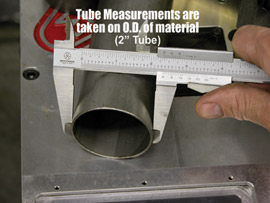
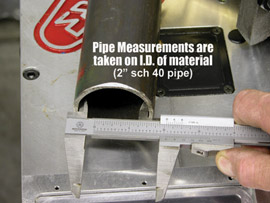
2. Why Is Material so Important?
When purchasing tube for your job, remember that the cheapest isn’t always the best. Bending tube or pipe of poor quality material often leads to poor-quality bends, higher rates of scrap, and possible breakage. Even the best machinery and tooling won’t overcome poor-quality tube material.
Material grade affects the tooling selection and composition; make sure the tooling is supplied to your material specifications so it doesn’t conflict with the material to be bent. As an example, stainless tube can conflict with a steel counter bend die.
When making a decision about material for your application, consider application strength requirements, appearance and quality, and centerline radius specifications. Ask your steel supplier for the material specification to ensure the material is appropriate for bending.
3. What Is Rotary Draw Bending?
By definition, a rotary draw bend is formed by drawing the workpiece around a rotating bend former. The leading edge of the material to be bent is clamped to the bend forming die, while material rests between the forming die groove and the opposing force, commonly referred to as the counter bend or pressure die. The forming die rotates to desired degree of bend completing the process.
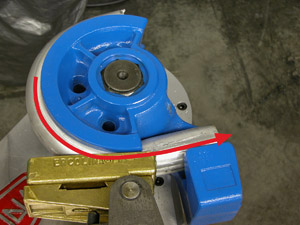
This bending process is less costly than some and far more expensive than others, so its suitability depends largely on not only your application and productivity requirements, but also your budget.
4. What Is Centerline Radius?
Often, centerline radius (CLR) is confused with the degree of bend. CLR is the distance from the center of the forming die to the centerline of the material to be bent. This distance often is overlooked, yet it is critical to achieving appropriate bend quality.
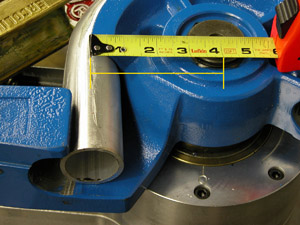
Factors that affect the CLR include the material grade to be bent, wall thickness, the type of bender to be used, the application, and overall appearance required. Generally speaking, CLR dimensions produce bends with better quality and appearance to the eye.
Bending materials to CLR less than two times the material diameter requires internal support of a mandrel to prevent the tube from collapsing. Rotary draw mandrel bending generally requires more expensive machinery and tooling than nonmandrel-style rotary draw machines. For this reason, be sure to review the application’s CLR carefully during the design stage, and consider the cost of manufacturing.
5. What Is the Maximum Degree of Bend?
This may sound simple; however, it is not if you are not given prints and are asked to reproduce parts form sample pieces.
Rotary draw bending tooling usually is designed to accept a maximum bend angle of 180 degrees. When selecting bending machinery for your application, be sure the machine program or system allows for slight overbending to compensate for springback during the bend cycle. Selecting a bending machine with a programmable bend angle setting can provide high bend accuracy and ease of use.
Degree of bend also affects bend quality. When working with a new material, try making two test bends—one at 45 degrees and one at 180 degrees. You may see slightly different results in the workpiece, because greater bend angles produce more wall thinning and deformation in the material.
6. What the Heck Is Springback?
After the bend cycle, all materials are prone to a springback affect. Essentially, material relaxes after the counterbend die pressure is released. Most materials are slightly overbent during the bend cycle to compensate for this effect.
Springback amounts vary depending on the strength and tensile of the material being bent. In addition, springback changes with the degree of bend and the CLR of the forming die.
Higher-quality bending machinery allows the operator to compensate for springback for each bend throughout the bend sequence.
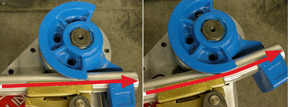
7. Why Is Minimum Distance Between Bends a Factor?
Tooling for rotary bending requires a straight section of material for the forming tool to clamp the workpiece securely and prevent slippage during the bend cycle. Applications always should be reviewed for the shortest distance between any two bends, and the tooling should be manufactured to compensate for this distance if possible.
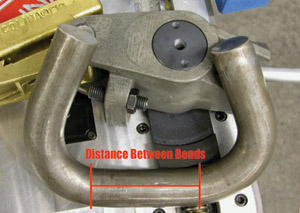
Less expensive bending machines might not allow the operator to achieve this distance, so the workpiece might need to be cut and welded after the bend to achieve the desired distance between bends.
8. How Many Bends Can I Produce?
Productivity requirements vary greatly, from job shop work to high-production runs. Actual bend cycle time often is insignificant relative to the overall cycle time.
To determine a realistic time, consider and allow for the following variables: operator experience, material loading and unloading, positioning time between bends, and machine speed and features, as well as secondary operations such as cutting, deburring, and welding. Be realistic about your productivity goals and select a bending machine with the appropriate duty cycle.
9. What Tooling Do I Need?
Rotary draw bend tooling varies greatly in quality, availability, and cost from manufacturer to manufacturer. Reputable manufacturers always are willing to discuss tooling requirements for your application and offer advice on which is most appropriate.
Standard tooling generally is more cost effective, so changing your part’s CLR dimension slightly, for example, to accommodate stock tooling could save a significant amount of time and money.
Special tooling often must be paid for in advance. If your application requires special tooling, allow for higher cost and extended delivery time. It is advisable to supply a sample of the material to be used and an application print with the special tooling order to prevent confusion.
10. Which Bender Is Right for My Shop?
Tough question, and maybe most important. No one bender is right for everyone. When selecting a bending machine, consider all of the points in this article before purchasing one. Also be sure to consider what capacity you might require in the future. Purchasing an inexpensive machine today could prove more costly in the future as other applications arise.
Other considerations include machine versatility, features, tooling, availability of parts, and qualified local and regional support.
Decoding Bend Terms
CLR – centerline radius. Distance from the center of the forming die to centerline of the material
DOB – degree of bend. Number of degrees required in a bend
Sch. – Schedule, or wall thickness of pipe
Ga. – Gauge, or wall thickness of tube
O.D. – outside diameter. Tube is measured here
I.D. – inside diameter. Pipe is measured here
